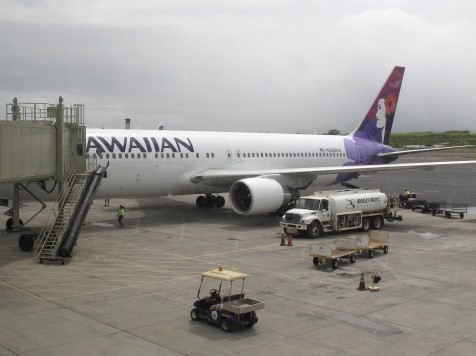
The story of a California teen who stowed away in the wheel well of of a 767 jet liner and flew all the way to Hawaii has raised the eyebrows of experts who think the whole story is unlikely to be true.
On Monday, April 21, the news cycle was enlivened by the story of a 15-year-old San Jose boy who stowed away in the left main gear wheel well of a 767 headed from California to Hawaii.
Officials at Hawaiian Airlines insisted that the boy was seen on surveillance video coming out of the wheel well of a jet that had just landed in Hawaii after the five-hour, 2,300 mile journey across the ocean from San Jose International Airport.
FBI spokesman Tom Simon also reported the story as the tale of a stowaway adding that the boy had no injuries.
The Federal Aviation Administration has in the past reported on such incidents in an attempt to explain how it is possible for someone to survive such an act, but the FAA also notes that many more have died trying.
Despite the lack of pressurization, or personal O2 equipment, the presence of warm hydraulic lines in the wheel-well and the initially warm tires provided significant heat. The stable climb of the aircraft enabled hypoxia to lead to gradual unconsciousness. As the wheel-well environment slowly cooled, hypothermia accompanies the deep hypoxia, preserving nervous system viability. With descent, and warming, along with increasing atmospheric oxygen pressure, hypoxia and hypothermia slowly resolved. At the ramp, with individuals were found in a semi-conscious state, and, upon treatment, recovered.
The FAA says that more than a dozen have tried it, all died but the two discussed above.
But experts from all across the spectrum from pilots to medical doctors and scientists say that there must be more to this newest story because surviving such a flight in a jet wheel well is next to impossible, despite what the FAA has said.
John Nance of ABC News, for one, said he didn’t believe the story.
“This is a first in medical science and a first in physiology–somebody surviving at 35,000 or higher for five hours with no supplementary oxygen–I just don’t believe it, Nance said on Monday afternoon.
Dr. Richard Besser, also of ABC News, agreed saying, “At high altitudes your body succumbs to hypoxia. It doesn’t get the oxygen it needs to survive and most people would pass out and die within a few minutes.”
One problem of surviving such an act is both a lack of, but also an over abundance of heat. During flight a wheel well can get down to 54 degrees below zero. It is why airline tires are filled with nitrogen instead of regular air. But as the planes taxi on the runway, the tires heat up from friction on the tarmac to hundreds of degrees and when those tires are pulled up into the wells the heat can be a killer.
Retired United Airlines pilot Bruce Milan was also skeptical noting that there isn’t much room between the tires and the walls of the well once the tires are retracted.
“You’d have to be very careful to think where the wheels are going to end up so they don’t crush you,” Milan said.
“It’s sort of unbelievable. I really wonder if it’s true,” he added.
Cass Howell, associate dean of the College of Aviation at Embry-Riddle Aeronautical University, was also skeptical of the tale.
“In every circumstance I know of, it’s fatal. I wouldn’t be shocked to find out that some part of his story doesn’t hold up,” Howell told USA Today.
Follow Warner Todd Huston on Twitter @warnerthuston or email the author at igcolonel@hotmail.com

COMMENTS
Please let us know if you're having issues with commenting.